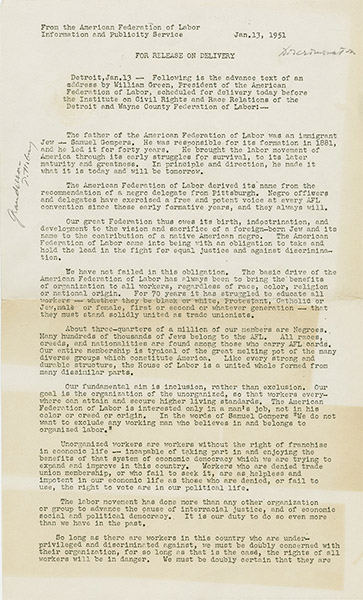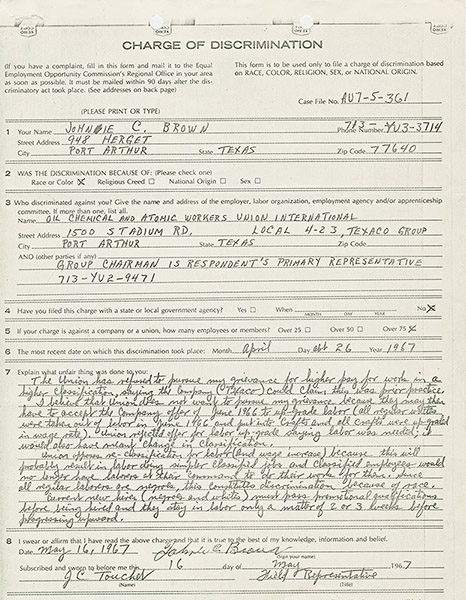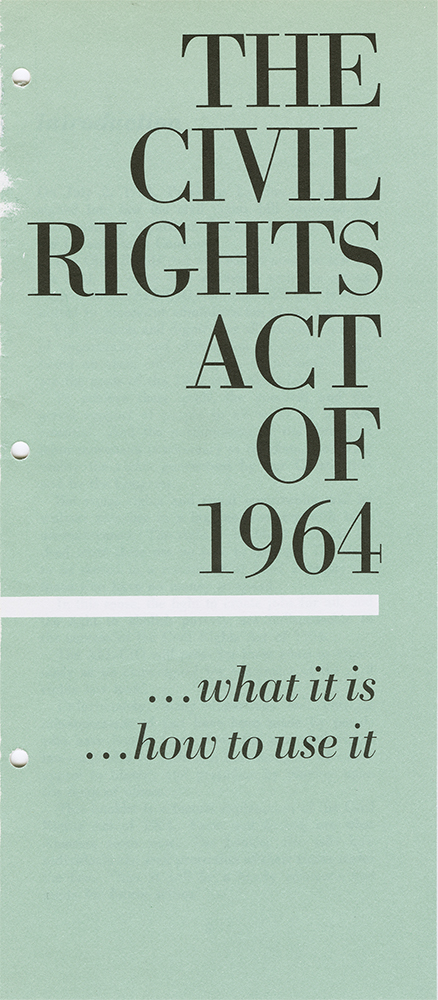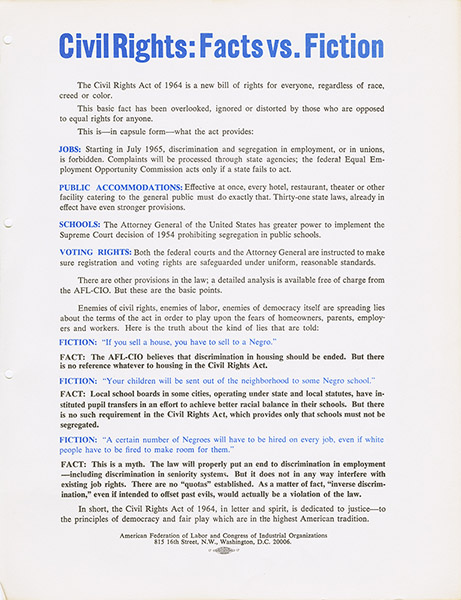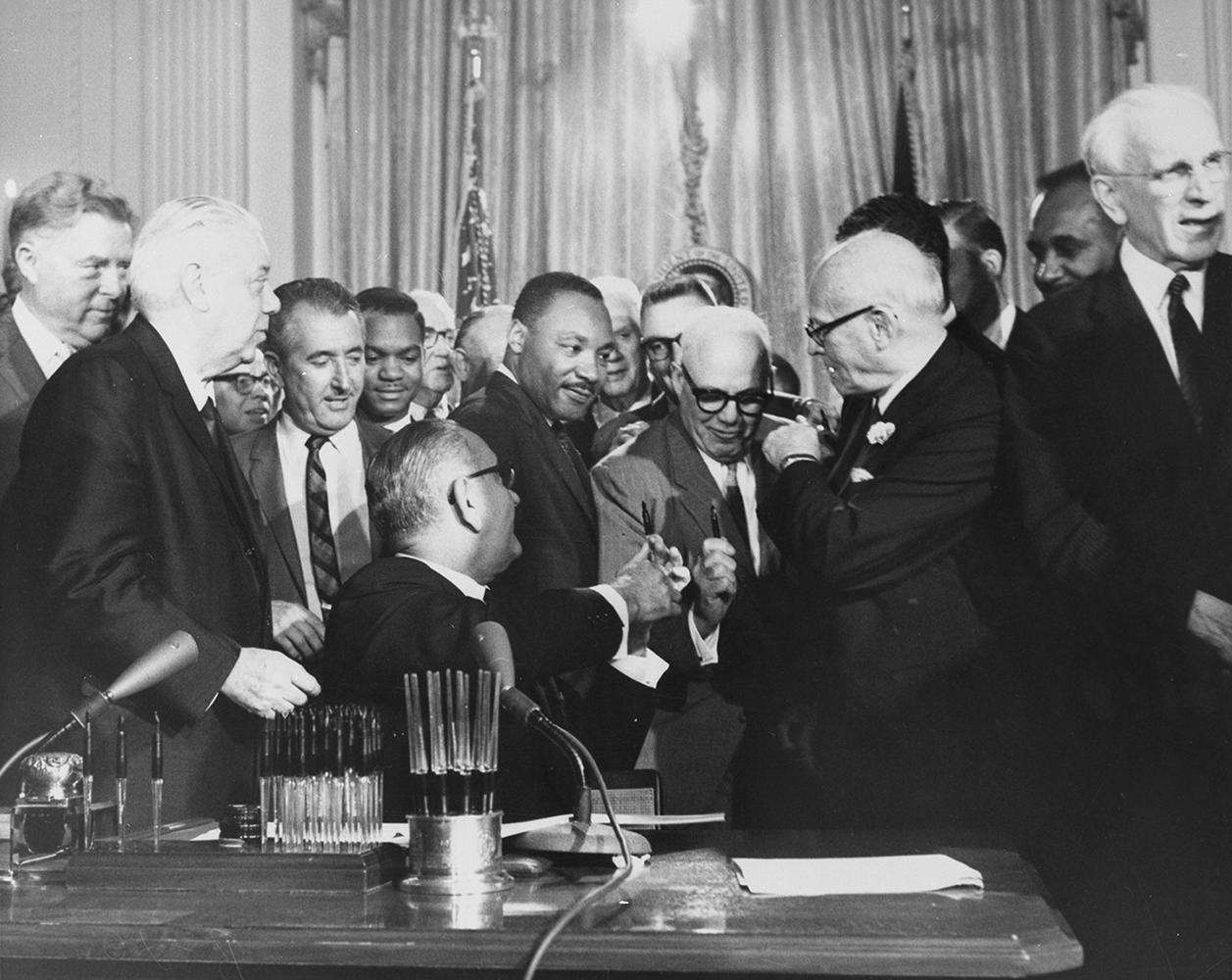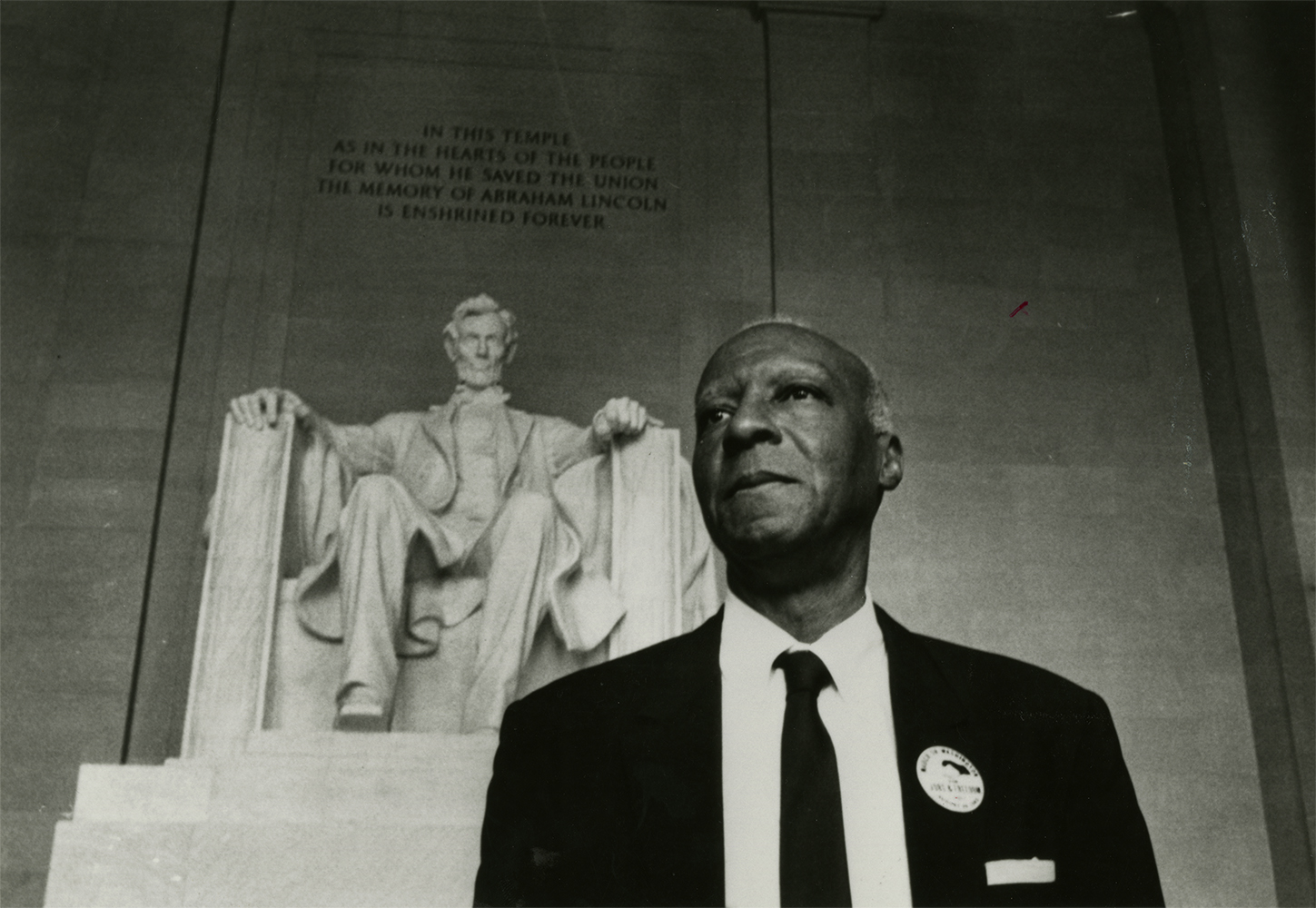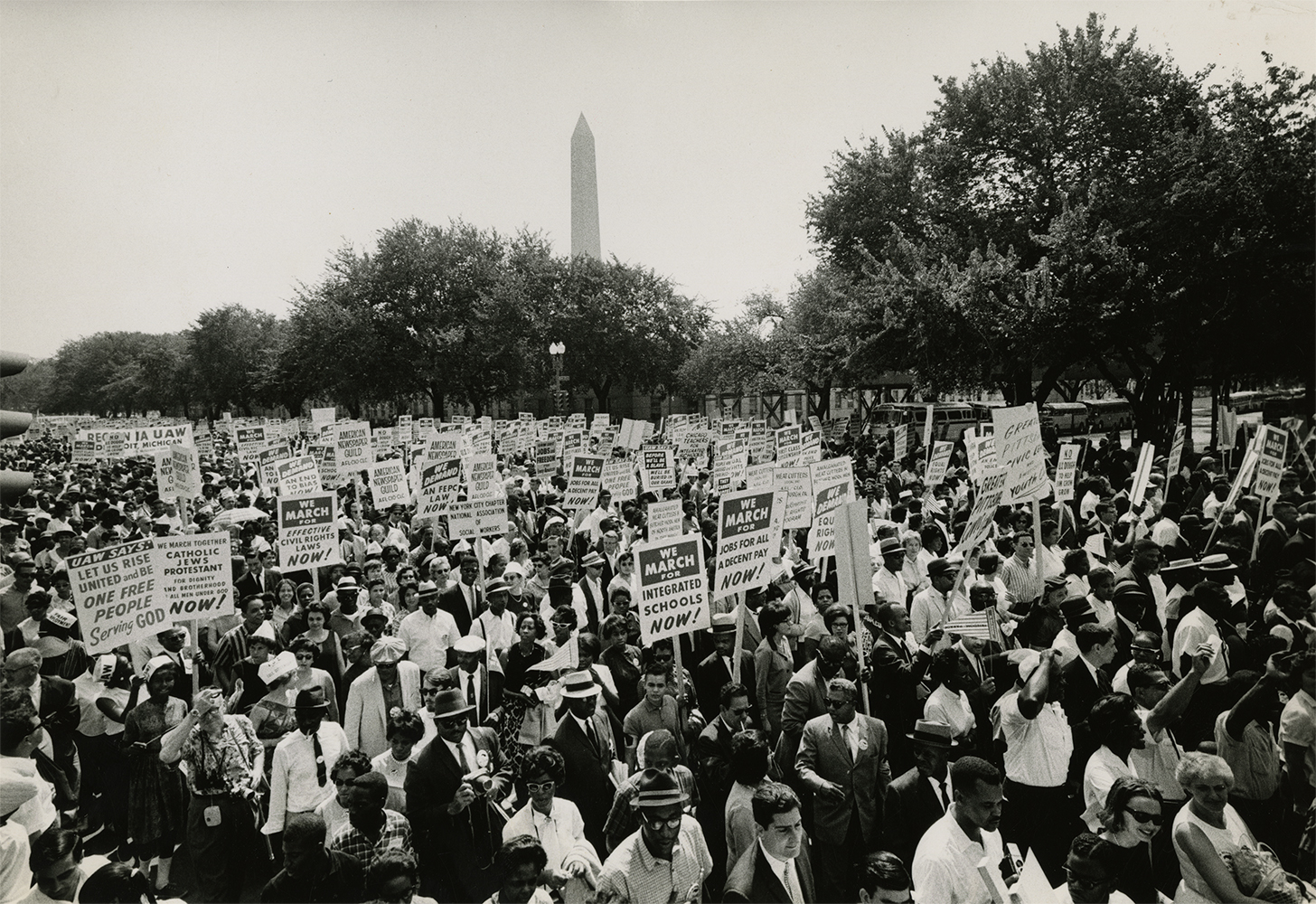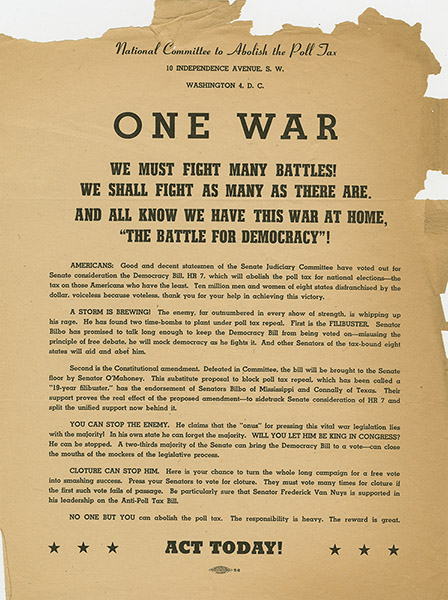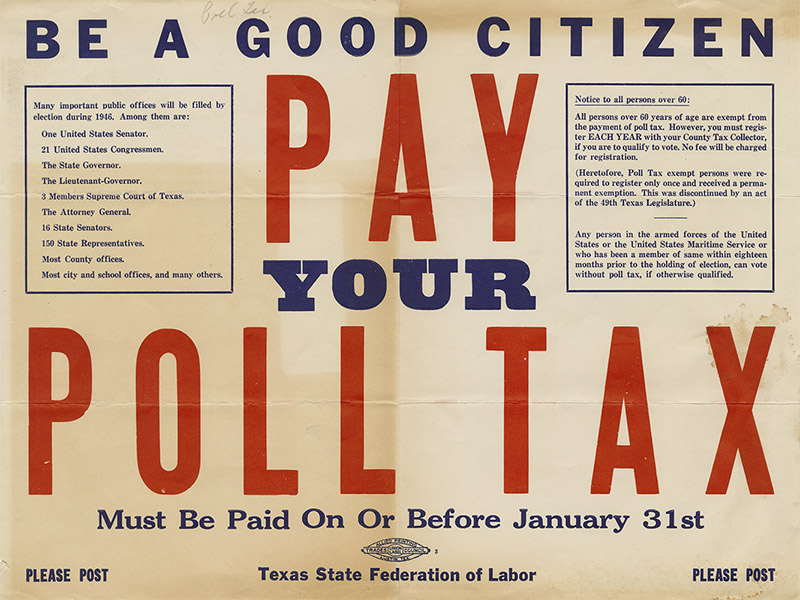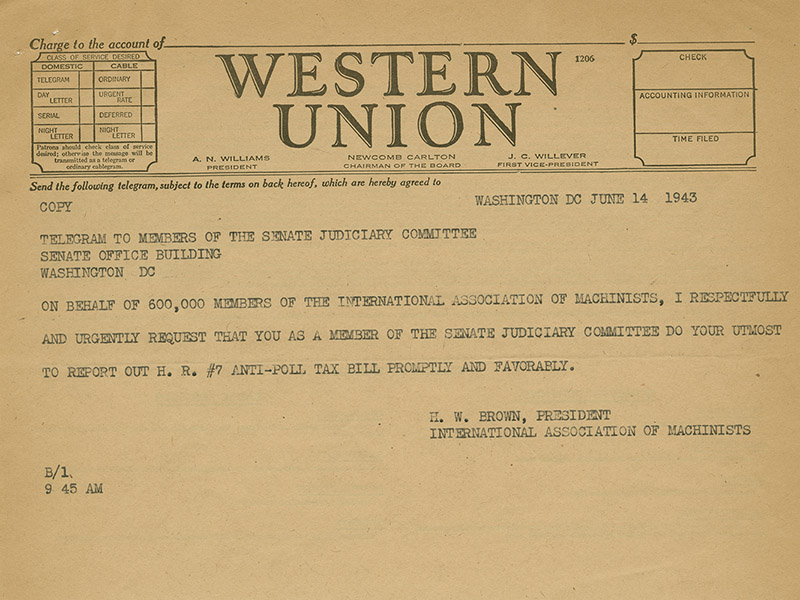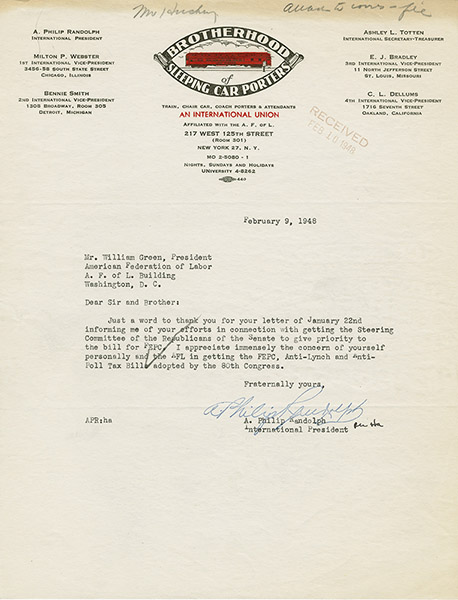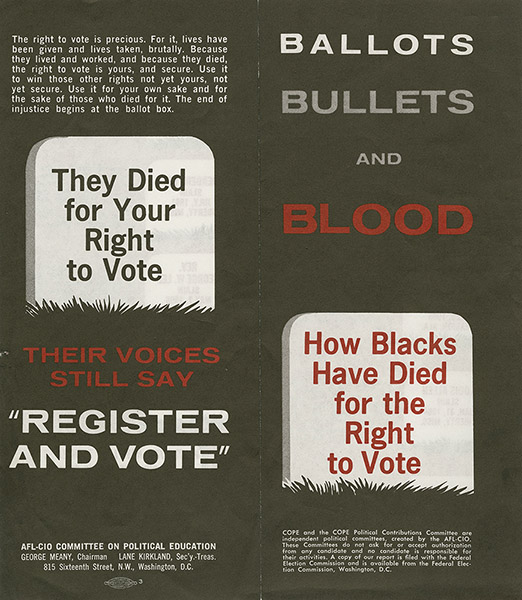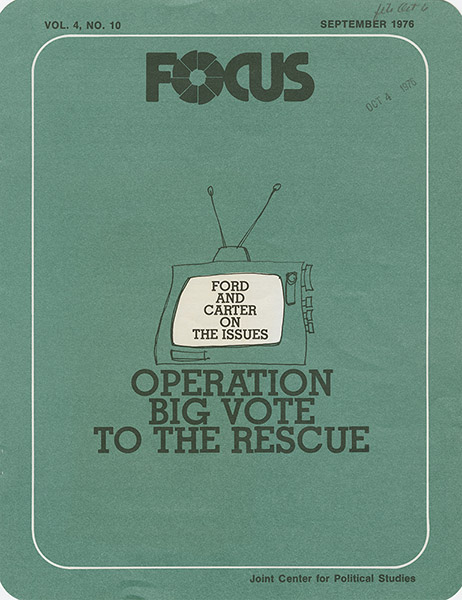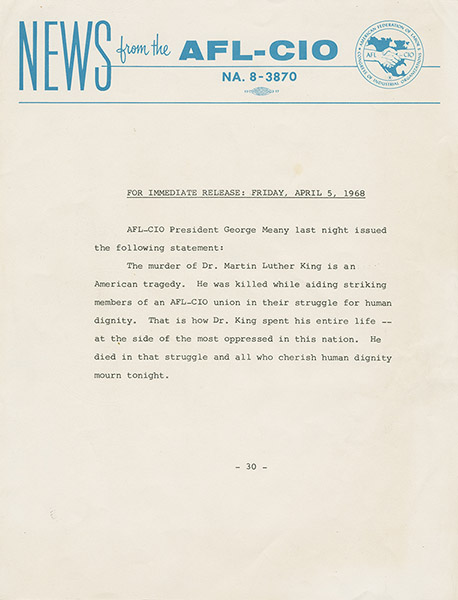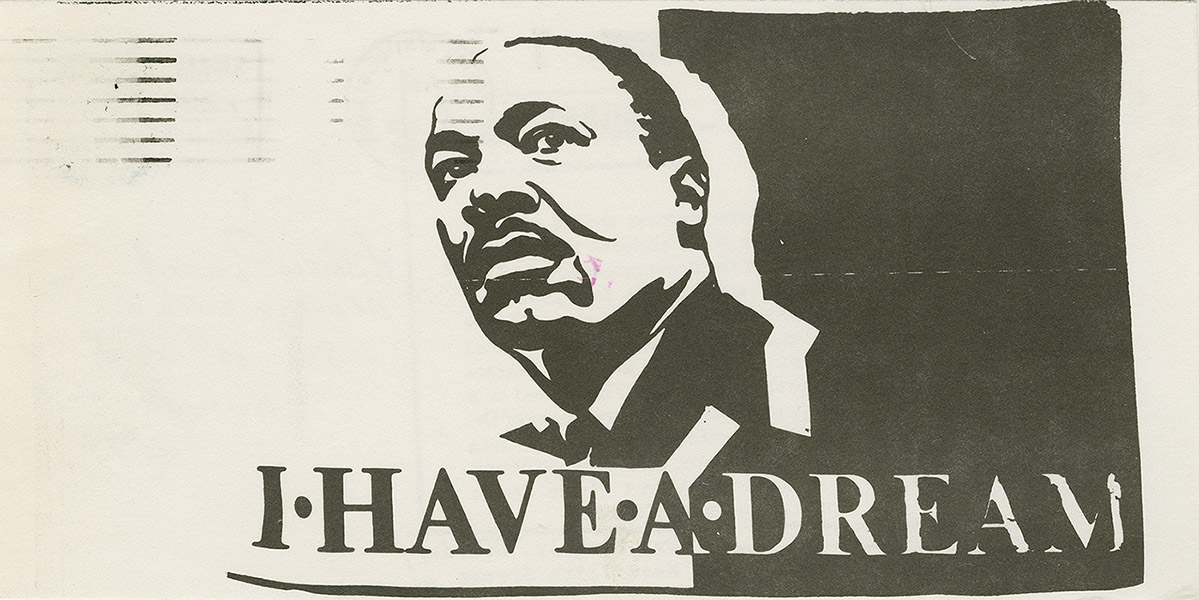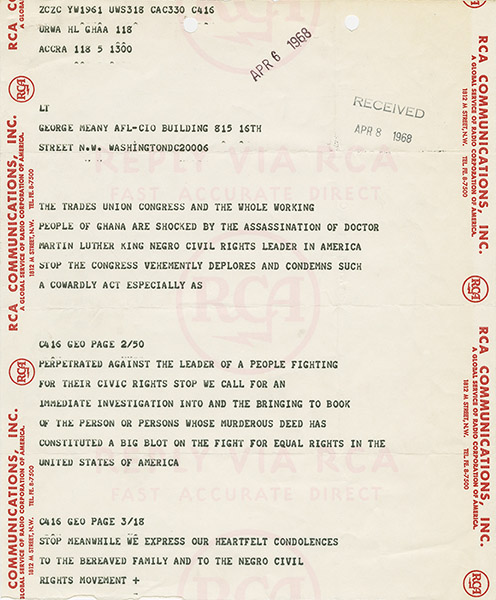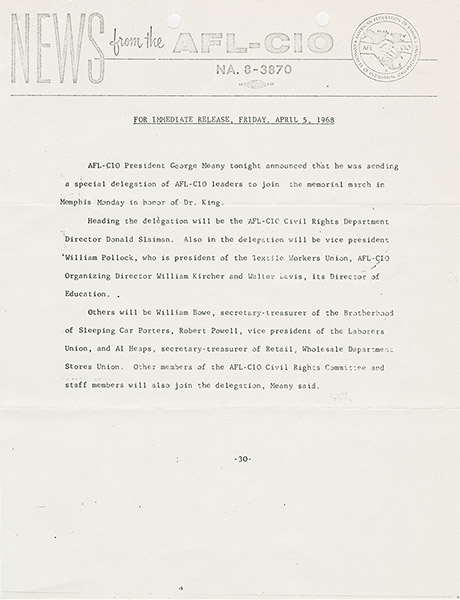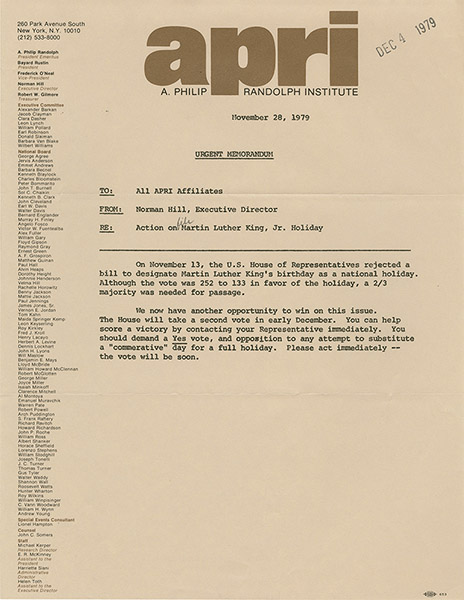African-American's Rights
A House Divided: African American Workers Struggle Against Segregation
Throughout the 19th and early 20th century, the labor movement struggled to overcome racism in the midst of a society divided by race. In 1866, the National Labor Union declared it would admit members regardless of an individual’s color or nationality believing unity was key to union strength. However, its affiliated unions continued to exclude or segregate workers by race, as white members tried to limit competition from African Americans for jobs. In response, Frederick Douglass and other progressive leaders supported the creation of new union organizations, such as the “Colored” National Labor Union, to organize against discrimination by employers and the labor movement.
In the 1880s, a new national labor organization arose, the Knights of Labor. The Knights vowed to admit workers of all races and nationalities, but this principle did not prevent the organization from tolerating segregated assemblies in the South. After the Knights were decimated by an employer backlash, the American Federation of Labor (AFL) revived the labor movement by organizing skilled workers. At its founding convention, the AFL required all affiliates to pledge that their members would never “discriminate against a fellow worker on account of color, creed or nationality.” Unfortunately, by 1895, the AFL reversed this position and allowed new affiliates to prohibit African Americans from joining their ranks. In many unions that had no color barrier, African American members continued to be segregated into local unions which limited their membership rights and employment opportunities.
Frederick Douglass (1818-1895) was one of America’s most important champions of equality and the right to organize a union. In 1872, Douglass was elected president of the “Colored” National Labor Union, and the publication he edited, The New National Era , became the union’s official newspaper. Portrait, circa 1880s-1890s. AFL-CIO Still Images, Morris B. Schnapper Collection.
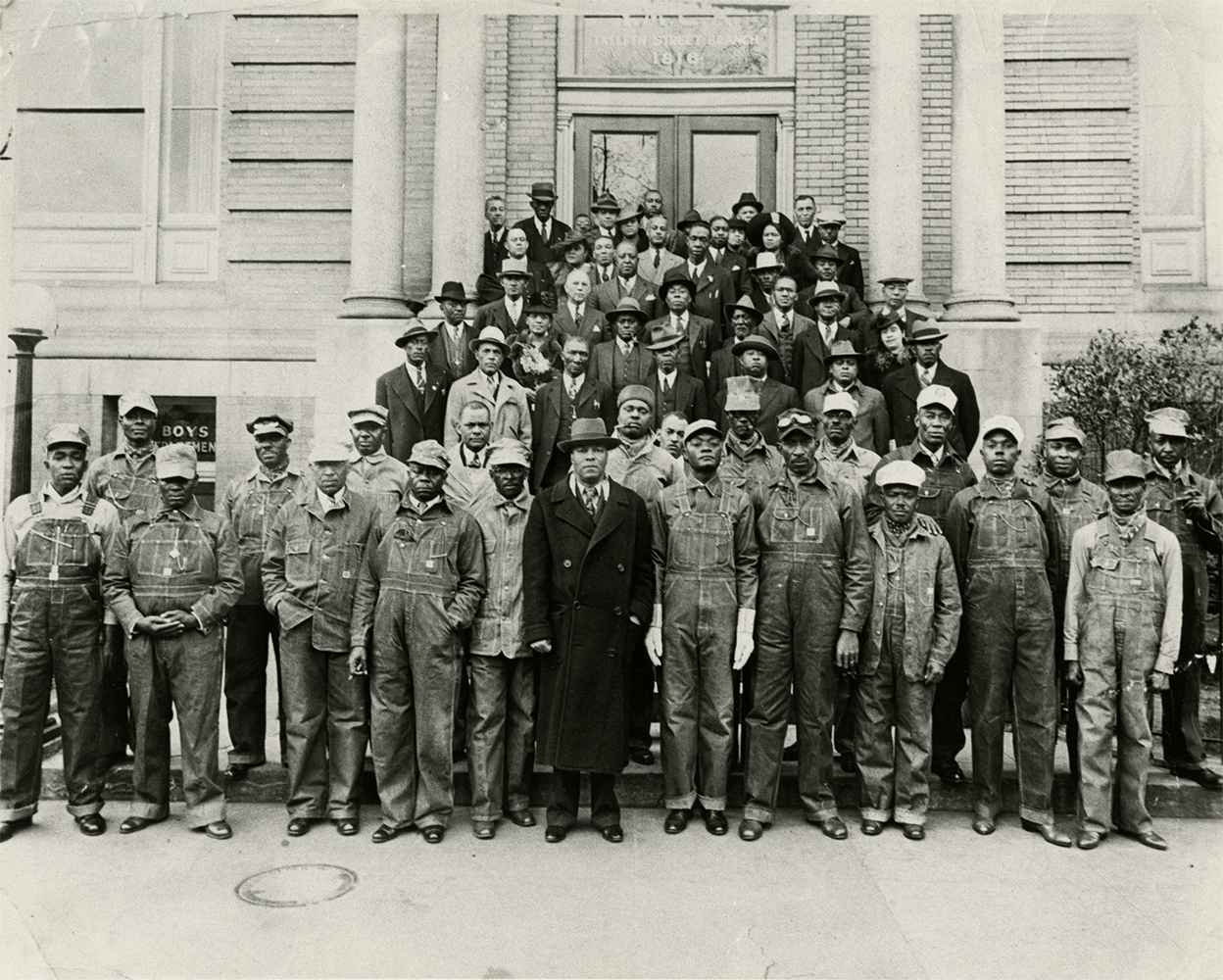
African Americans who maintained railroad locomotive engines had to sue the Brotherhood of Locomotive Firemen and Enginemen all the way to the Supreme Court to gain admission to the union in 1944. Members involved with the lawsuit pose with A. Philip Randolph (1889-1979), President of the Brotherhood of Sleeping Car Porters, and prominent civil rights leader, circa 1940-1944. AFL-CIO Still Images, Photographic Prints Collection.
From Segregation to Fair Employment: The Drive for Equality
The rise of mass production, new limits on immigration, and World Wars I and II drove millions of African Americans north to find work in America’s expanding industrial economy. By the 1930s, the growing importance of African Americans in industry began to tip the balance away from segregation and exclusion toward unity and inclusion. In 1935, the Brotherhood of Sleeping Car Porters (BSCP) was granted a charter by the American Federation of Labor (AFL). The BSCP was founded by African American workers and led by A. Philip Randolph, who went on to play a leading role in the movement for equality within the labor movement.
At its founding convention in 1936, the Congress of Industrial Organizations (CIO), in competition with the AFL, pledged to organize workers with no distinction to race or color and opposed all forms of segregation. In 1941, A. Phillip Randolph threatened a national march on Washington, D.C. if the federal government did not take action to end employment discrimination in the defense industry. Under pressure, President Franklin D. Roosevelt issued an executive order that prohibited these discriminatory practices and established the Fair Employment Practice Committee. One year later, the CIO created the Committee to Abolish Racial Discrimination, which focused on combatting discrimination related to job assignments and promotions.

The Black Worker, newspaper of the Brotherhood of Sleeping Car Porters, July 1937, front page reproduction. AFL-CIO Still Images, Photographic Prints Collection.
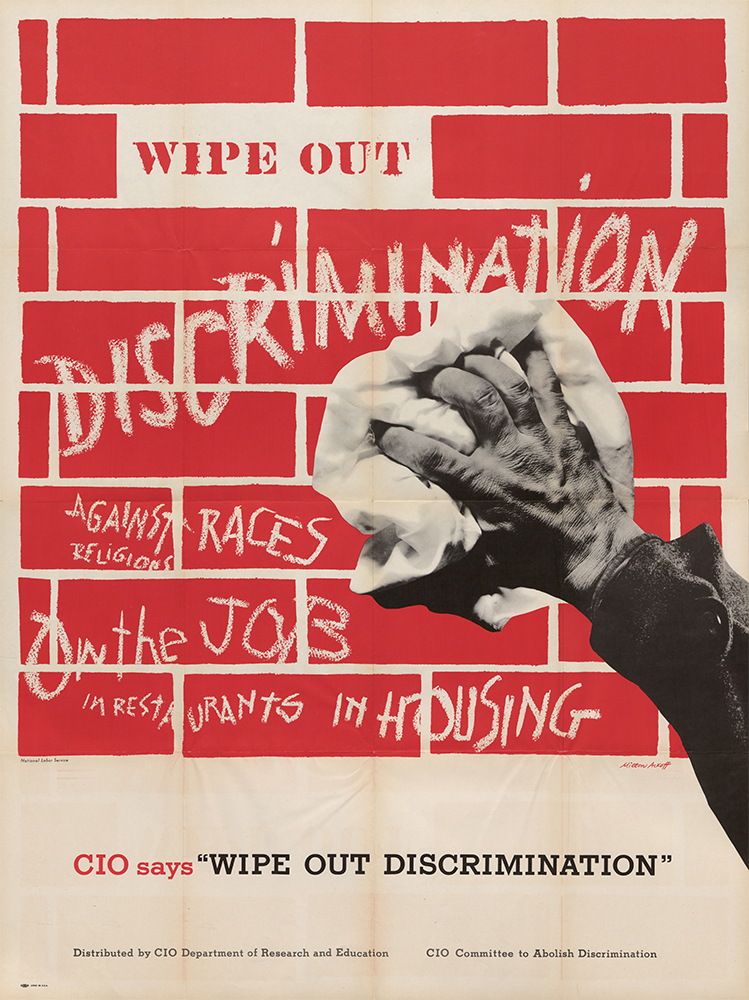
Congress of Industrial Organizations (CIO) poster used to promote organizing against discrimination, circa. 1940s-1955. AFL-CIO Posters, Broadsides, and Art Collection.
Civil rights speech by American Federation of Labor President William Green before the Institute of Civil Rights and Race Relations of the Detroit and Wayne County Federation of Labor. January 13, 1951. AFL-CIO Civil Rights Department Records, American Federation of Labor.
Discrimination case list. February 15, 1963. AFL-CIO Civil Rights Department Records, Director's Files.
After the passage of the 1964 Civil Rights Act and the establishment of the Equal Employment Opportunity Commission, union members around the country filed charges with the federal government seeking to reverse employer and union discrimination.
Charge of Discrimination against the Oil, Chemical and Atomic Workers Union, Local 4-23, and Texaco Incorporated. Port Arthur, TX. May 16, 1967. AFL-CIO Civil Rights Department, Discrimination Case Files.
Call by AFL-CIO President George Meany for the full enforcement of voting rights and fair employment provisions of the 1964 Civil Rights Act by local and state labor, community and employer organizations on the occasion of the signing of the bill by President Lyndon Johnson. News from the AFL-CIO. July 2, 1964. AFL-CIO Information Department Records, Press Releases.
The Civil Rights Act of 1964…What is It…How to Use It. AFL-CIO. 1964. AFL-CIO Support Services Department Records, Publications.
President Lyndon Johnson handing pens to Dr. Martin Luther King, Jr. and AFL-CIO President, George Meany, at the signing the 1964 Civil Rights Act. AFL-CIO News, July 11, 1964. Photographer Nate Fine. AFL-CIO Still Images, Photographic Print collection.
From Fair Employment to Civil Rights: Sharing the Dream
The conservative politics of the Cold War put the labor and civil rights movements on the defensive. In 1946, the Fair Employment Practice Committee was abolished, limiting the ability of unions and civil rights organizations to fight discrimination on the job. Despite this political backlash, the American Federation of Labor (AFL) appointed a spokesman for civil rights for the first time. When the AFL and the Congress of Industrial Organizations (CIO) merged in 1955, a Civil Rights Department was created to build on the work of the Committee to Abolish Racial Discrimination. Organized labor also backed the civil rights movement’s campaigns against discrimination in public facilities, housing, education, and voting by providing financial resources, legal support, publicity, and lobbying efforts in Congress.
In 1963, the labor movement began to play a larger role in the civil rights movement by mobilizing 40,000 union members for the March on Washington for Jobs and Freedom. The following year, the AFL-CIO provided critical lobbying support and testimony for the Civil Rights Act of 1964 and the Voting Rights Act of 1965. These two laws led to the filing of thousands of successful cases against workplace discrimination and eliminated many of the racist voting restrictions in the South.
Today, the labor movement continues to support civil rights through organizations such as the AFL-CIO Race Commission and seeks to prevent the weakening of anti-discrimination laws and enforcement.
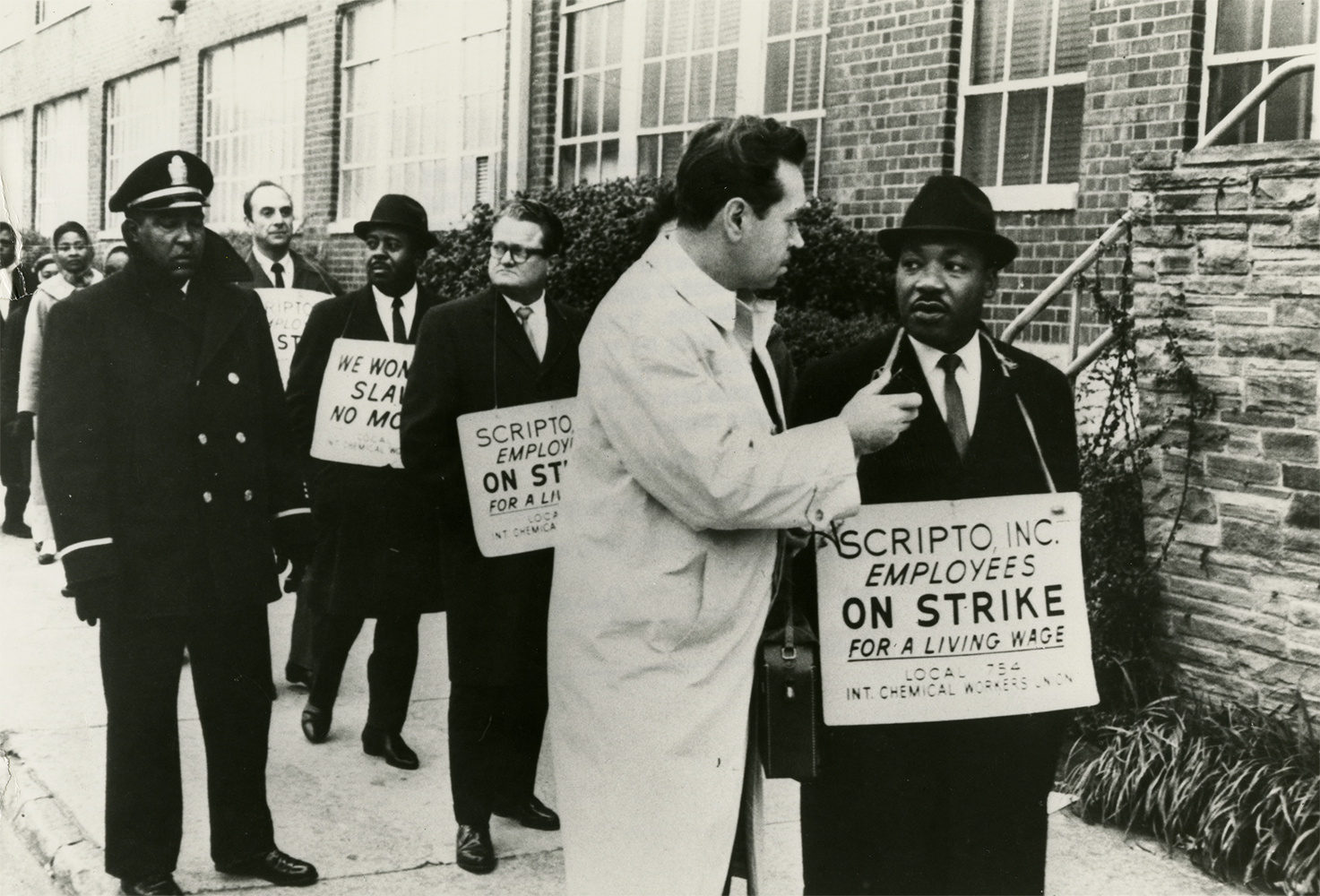
Dr. Martin Luther King, Jr. joins a picket line in support of a strike by the International Chemical Workers Union, Local 754, against discrimination at the Scripto Pen Company, Atlanta, 1964. AFL-CIO Still Images, Photographic Prints Collection.
A. Philip Randolph (1889-1979), march organizer, poses before the Lincoln Memorial during the March on Washington for Jobs and Freedom, 1963. AFL-CIO Still Images, Photographic Prints Collection.
March on Washington for Jobs and Freedom. Signs by union members from the United Auto Workers (UAW), Amalgamated Meat Cutters and Butcher Workmen, the National Association of Social Workers, the Chicago Teachers Union, and the American Newspaper Guild, 1963. AFL-CIO Still Images, Photographic Prints Collection.


